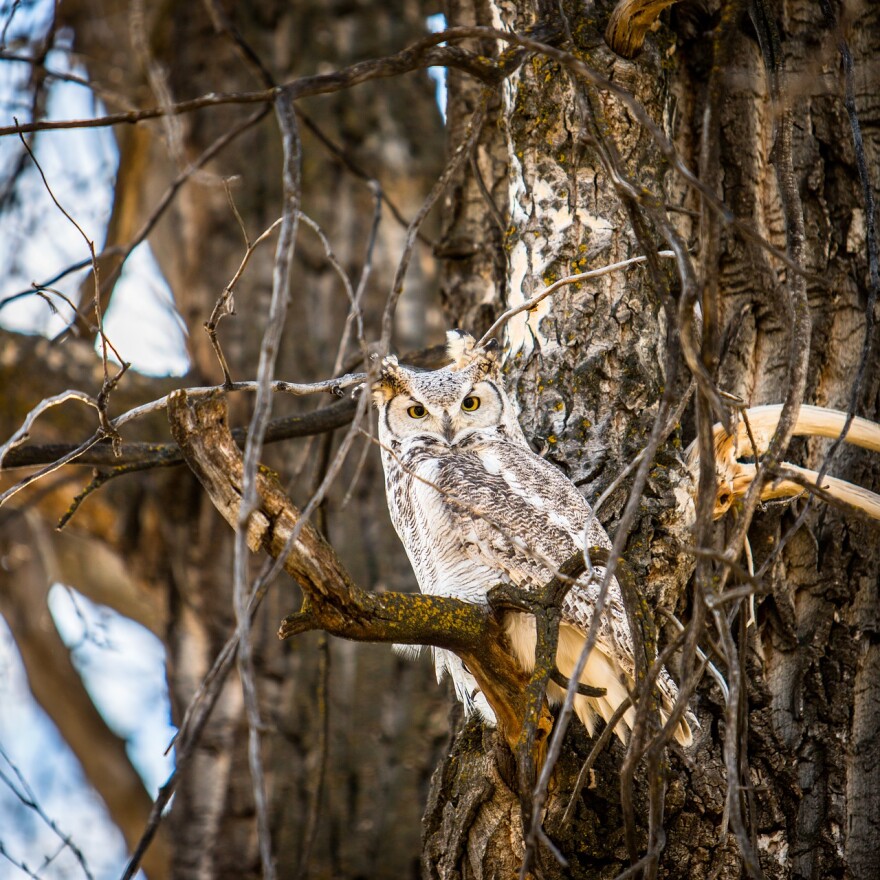I was admiring a blanket of stars spread above Lake Como in Montana’s Bitterroot valley, when out of the stillness of the chill winter night came floating a deep, dignified, hoo-h’HOO-hoo-hoo.
There are few things more evocative of wildness in the northern woods than the hooting of great horned owls.
Hooting advertises their territory, and breeding pairs, which generally mate for life, will engage in hooting duets, in which the female goes first, followed by her deeper-throated mate. Although, like most birds of prey, female owls are larger than males, their voice boxes are smaller, which makes their hooting more high-pitched.
Great horned owls tend to nest earlier the further north they live, but can be found in almost any habitat throughout North America and into South America. In Montana, great horned owls usually begin nesting in February, so winter is one of the best times to hear their territorial hooting. Breeding pairs often stay on their territory all year round, but they only roost together and defend their territory by hooting during the breeding season, especially just before egg-laying and in the fall, when their young disperse.
Owls aren’t known for their architectural abilities, and often use nests constructed by another species, including old squirrel, hawk or raven’s nests. Sometimes, they simply nest on the top of a snag or platform or even on the ground and any attempts at interior decoration are limited to a few feathers, bits of bark or trampled pellets.

Eggs take just over a month to hatch, and if you come across the live feed of a nest camera online, you might be surprised to see something akin to bullying. This is because owls, like many other large birds including raptors and herons, tend to invest the most in their first child and lay more eggs than are likely to survive as a form of reproductive insurance. When times are good and there’s plenty of food, everyone gets to live, but if there is a shortage of prey, larger chicks will often out-compete or even directly kill their smaller siblings. In the event that one of the eggs fails to hatch, an extra “insurance” egg can then help hedge the parents’ reproductive bets.
Unlike songbirds, which wait to lay a full clutch of eggs before starting to incubate, owls (and other siblicidal species) stack everything in favor of the first egg by incubating once it has been laid. This means that the chick from that first egg gets a developmental head-start and is already bigger and stronger and better able to compete for food than its younger siblings while the last chick to hatch is the runt by several days. To stack the deck even more, the first egg is usually the heaviest, so even at the point of hatching, the first chick is larger than its younger siblings. In some egret species, there is even evidence that mothers put more androgens into the earlier eggs, making those chicks temperamentally more aggressive.
Whether there is just one chick in the nest or several, great horned owls take about 5-7 weeks to fledge, but can hang around begging for food for months, so if you hear any screams, even as late as October, it could be the begging cries of teenage owls. Evolutionary biologists would call this an example of parent-offspring conflict, in which children are demanding more care and energy than is in their parents’ long-term reproductive interests to give.
The next time you are out in the woods, do look out for an untidy nest that might have two owl feathers poking out, or listen for the hooting of one or two great horned owls who have just started a new family.
"Field Notes" is produced by the Montana Natural History Center.
(Broadcast: "Field Notes," 3/11/18 and 3/16/18. Listen on-air or online Sundays at 12:55 p.m., Tuesdays at 4:54 p.m., and Fridays at 4:54 p.m., or via podcast.)


